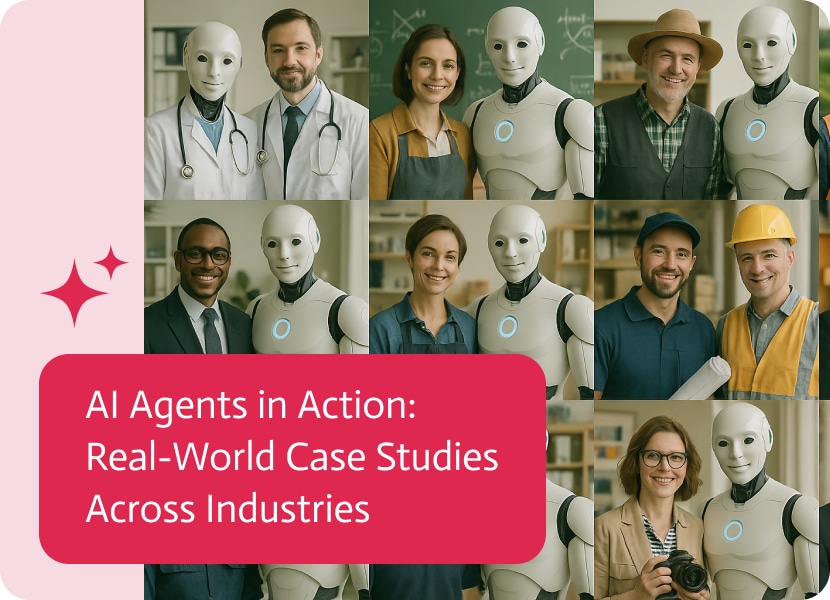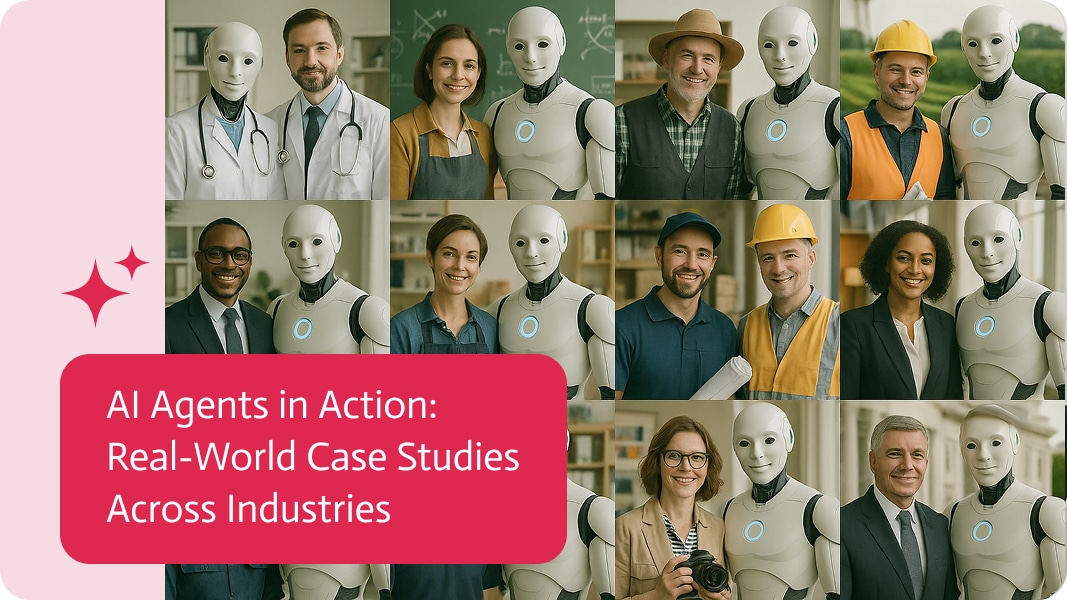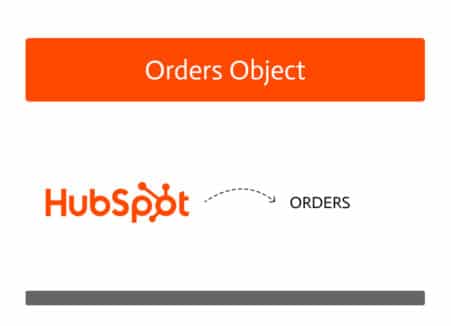

AI Agents at Work (Real-World Case Studies)
For years, the corporate world has flirted with automation. Bots processed invoices, scripts moved data from A to B, and RPA quietly clicked buttons when nobody was watching. But in 2025, we’ve crossed a line. We’re no longer just automating jobs as AI Agents at Work are now the new reality, acting as digital employees: end-to-end, autonomous workers that handle entire outcomes of a business.
They aren’t “assistants” waiting for instructions. They’re fully fledged digital colleagues capable of logging into systems, reasoning through workflows, talking to customers, negotiating steps, and confirming completion. In short, they don’t just help you with work; they do the work.
To make this shift real, let’s step away from buzzwords and look at where digital employees are actually earning their keep in different industries like healthcare, retail, and legal. Agentic systems are out of pilot mode and being treated like genuine members of the team and we’re going to take a gander at a few cases where they’re already proving their worth.
Banking: How a Digital Loan Officer Transforms Lending
A mid-sized European bank recently deployed what they call a Digital Loan Officer. Instead of a human spending hours reviewing applications, collecting documents, doing credit checks, and sending approvals, the digital employee handles the end-to-end workflow.
Here’s how it works:
- A customer applies online.
- The digital employee automatically requests supporting documents, verifies identity, and interfaces with third-party credit agencies.
- It applies the bank’s risk model, flags anomalies, and issues conditional approval or a rejection with full audit trails.
- Finally, CRM is automatically updated, it notifies the customer, and it also plans the next steps.
Turnaround time dropped from three days to under two hours. Customers love the speed, the bank saves on operational costs, and regulators appreciate the auditable process logs. Human loan officers are still in the picture; it’s just now they focus on difficult or very valuable cases, not just regular paperwork.
In financial services, time is money, but compliance is everything. A digital employee that can work 24/7, never misplace a file, and leave a perfect paper trail is a huge advantage.
Healthcare: AI Care Coordinator Improves Patient Experience
Hospitals are notorious for administrative sprawl. A cancer patient might interact with ten different specialists, each generating paperwork, follow-ups, and billing items. Enter the digital care coordinator, a role once handled by an overworked nurse or administrator, is now managed by an autonomous digital colleague.
This digital employee integrates with the hospital’s computer system, insurance portals, and scheduling software. It:
- Books patient appointments across multiple departments.
- Ensures medical records are updated and routed to the right specialists.
- Coordinates insurance pre-authorizations.
- Reminders are sent to patients, including prep instructions for tests or treatments.
In a U.S. hospital pilot, no-shows dropped by 22% after deployment. Patients were happier because they received consistent communication. Clinicians reported fewer delays caused by missing records or paperwork mistakes.
When it comes to healthcare, a missed appointment isn’t just inefficiency, it’s risk. A digital employee that ensures the right patient, the right doctor, and the right documentation align at the right time literally improves results.
Logistics: AI Freight Manager Streamlines Deliveries
Supply chains are chaos factories. Trucks are delayed, shipments get lost, and customs bottlenecks appear overnight. Human freight managers spend days juggling phone calls, spreadsheets, and tracking numbers.
A global logistics firm introduced a Digital Freight Manager that autonomously oversees shipments end-to-end:
- It tracks cargo in real time using data and carrier APIs.
- When delays occur, it proactively reroutes shipments and notifies customers.
- It generates customs paperwork, validates tariffs, and pays duties through integrated portals.
- It closes out jobs by reconciling invoices and updating ERP records.
The results? Late shipments have gone down by 30%, and more customers are staying with the company. Human managers now oversee exception cases like diplomatic cargo and hazardous goods, while routine freight moves without human bottlenecks.
Logistics is margin-thin. A digital employee that can shave hours from disruption management translates directly into competitive advantage.
Retail: AI Assistant Perfects Inventory Accuracy
Retailers have always struggled to keep shelves stocked correctly, both in-store and online. A digital merchandising assistant is now helping a grocery store chain keep items in stock and avoid having too much of any product.
Here’s what it does:
- Monitors POS data in real time.
- Forecasts demand through historical info and marketplace signals.
- Places replenishment orders with suppliers automatically.
- Updates listings to ensure inventory accuracy.
- Flags pricing anomalies or competitive mismatches.
fewer empty shelves, reduced waste from perishable goods, and more consistent margins. Store managers spend less time chasing inventory and more time improving the experience their customers have.
Mistakes in inventory bleed profit. A digital employee that can predict, order, and reconcile stock with minimal intervention is a silent revenue engine.
HR: AI Recruiter Speeds Up Hiring and Improves Fit
Recruitment has long been a grind of CV scanning, scheduling, and back-and-forth. A multinational consulting firm now employs a digital recruiter to handle end-to-end candidate screening for entry-level positions.
The digital employee:
- Collects applications and parses CVs.
- Cross-references qualifications to make sure job requirements are met.
- Schedules assessments and video interviews.
- Scores candidates, flags top matches, and sends rejections to others.
- Updates the HR system and triggers offer letters.
Hiring cycles that once took six weeks now average three. Candidates appreciate timely communication, while HR can now focus on senior-level or nuanced hires.
Recruitment is about speed and fit. A digital employee that communicates consistently and shortens time-to-hire delivers direct business value.
Legal: AI Contract Analyst Boosts Review Accuracy
Looking through contracts can be tedious and expensive, not to mention being privy to mistakes. A global energy company recently deployed a digital contract analyst designed for routine supplier agreements.
This digital employee:
- Ingests contracts from email or online drives.
- Extracts key terms: liability clauses, renewal dates, and payment terms.
- Flags non-standard language or high-risk terms.
- Suggests standardized revisions.
- Files approved contracts in the company’s legal database.
In its first quarter, the system reviewed 2,000+ contracts with a 96% accuracy rate compared to human lawyers. Legal teams now turn their focus to planning strategies instead of routine tasks.
Law firms and in-house teams drown in volume. A digital employee that processes contracts quickly and consistently frees human lawyers for high-value analysis.
What Real AI Agent Success Stories Reveal
Looking across industries, a clear pattern emerges:
- Digital employees flourish in well-organized, outcome-based workflows. Loan approvals, shipment management, and contract review are bounded tasks with measurable completion criteria.
- Human workers don’t disappear, their jobs change. Nurses handle care, not scheduling. Recruiters focus on culture fit, not inbox triage. Freight managers manage exceptions, not routine shipments.
- The competitive edge is consistency. Unlike humans, digital employees don’t tire, forget, or cut corners. Once they have been trained, they’ll deliver the same level of performance every time.
But there are still problems:
- Inaccurate data will affect an agent’s performance.
- Governance is non-negotiable, like logs, compliance checks, and what to do when something goes wrong.
- People need time to accept this switch, and they need to trust these digital teammates.
Designing a Digital Employee Strategy
If you’re considering adding digital workers to your workforce, think beyond the “shiny demo.” The best deployments follow a disciplined playbook:
- Start with one role, not the whole org. Define an outcome you can measure in weeks, not years.
- Build guardrails. Decide when somebody needs to double-check and where autonomy is safe.
- Instrument for trust. Digital employees need dashboards, logs, and explainability so managers know what they’re doing.
- Treat them like hires. Onboard them, give them KPIs, performance reviews, and iterate their skills.
- Plan for coexistence. People and AI employees should complement each other, not compete in the same workflows.
The Human Side of AI Agents in the Workplace
Here’s the irony: digital employees aren’t replacing people so much as they’re exposing the sheer amount of work that shouldn’t be done by people in the first place. Endless scheduling, repetitive approvals, and simple data checks. These aren’t jobs people look forward to, they are boring chores.
What digital employees are doing is stripping away the grind and letting us use our judgment, creativity, and strategic problem-solving. In healthcare, that’s life-saving. In retail, it’s margin-saving. In logistics, it’s sanity-saving.
Conclusion: The Workforce Just Better
The workplace is no longer a binary of humans and software tools. It’s a mixed economy of people and artificial employees working side by side, each doing what they do best.
Humans bring adaptability and relationship skills. Digital employees offer accuracy, consistency, and tireless execution. When they work together, they form hybrid teams where outcomes accelerate, errors drop, and whole industries rethink what “work” looks like.
The digital workforce isn’t theoretical. It’s here, on the payroll, taking meetings (sort of), and a complete restructuring of entire industries from the inside. And in the next few years, the real question won’t be “Will digital employees replace humans?” It will be “Which companies figured out how to make digital colleagues part of their culture, and which got left behind?”
FAQs
1. What’s a digital employee, and how does it differ from traditional automation (like RPA)?
A digital employee is a smart AI that uses LLMs to do whole business tasks on its own. Unlike simple RPA bots that just follow set steps, these digital workers can think, change plans, and decide things based on different types of info.
2. What are the benefits of implementing digital employees in a business?
They work all day and night, automation saves money, lowers mistakes, and lets people work on more important, creative, and customer-related stuff.
3. Will digital employees kick human workers out of their jobs?
Nope, they’re made to add to and work with people. Digital employees do the boring, data-heavy jobs, while people watch over, make ethical calls, and deal with complex choices. They’re teammates, not replacements.
4. How safe and by-the-book are digital employees with industry rules?
Big business platforms have good security and try to follow industry laws. Companies need to control massive amounts of data and set up the digital employees to meet their own rules and moral needs.
5. What are the best jobs for a digital employee?
Looking for workflows that repeat, follow rules, take a lot of time, or have many steps. The best uses are usually those that hold things up or need to link systems in one process.


